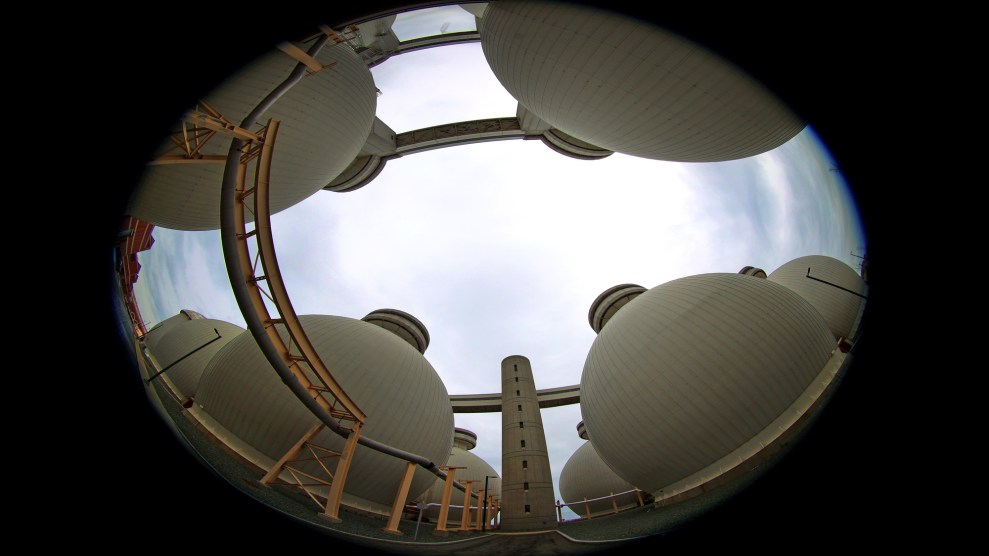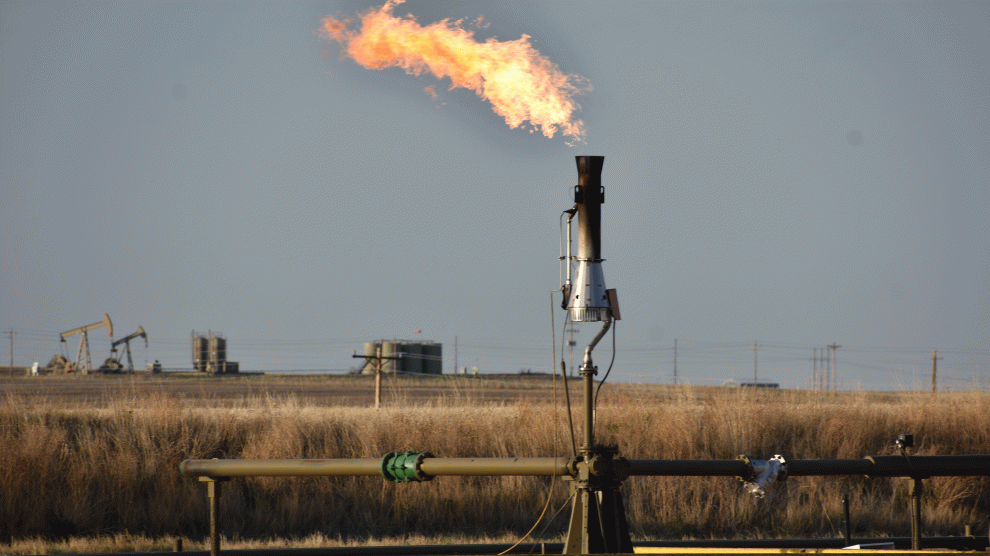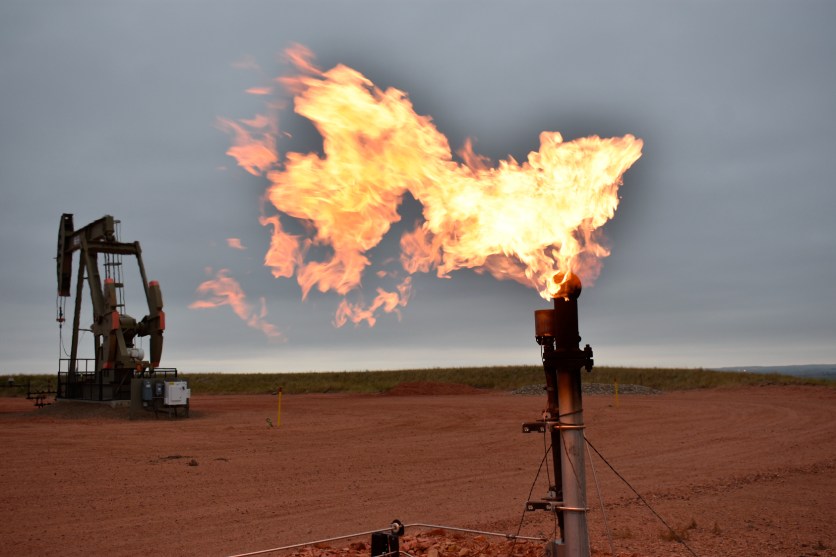
A fish eye view of a wastewater treatment facility in Winthrop, Mass.David L. Ryan/Boston Globe via Getty
This story was originally published by Grist and is reproduced here as part of the Climate Desk collaboration.
Wastewater treatment plants are typically overlooked when it comes to reducing greenhouse gasses, but new research from Princeton University reveals the plants emit twice as much methane as previously thought.
Methane is a particularly potent greenhouse gas and the treatment plants should be part of any plan to reduce emissions, according to the study released last week. “Wastewater treatment plants are a major source of greenhouse gasses in cities and we need to start treating them like that,” said Mark Zondlo, a professor of civil and environmental engineering at Princeton and one of the authors of the research.
Published in the Environmental Science and Technology journal, the report is the largest conducted on methane pollution from wastewater treatment plants in the United States. The scientists examined 63 facilities in California and the East Coast. Their research showed that methane from these facilities exceeded the Environmental Protection Agency’s estimates by the equivalent of 5.3 million metric tons of carbon dioxide.
Scientists use carbon dioxide equivalence as a metric to standardize the emissions of many different types of greenhouse gasses. The previous estimate for emissions by wastewater treatment plants was 6.3 million metric tons of carbon dioxide, according to the EPA. The new study calculates that current emissions are now 11.6 million metric tons of carbon dioxide.
“We have more than a million miles of sewers in the US filled with rich organic matter that may be causing methane emissions, but we have very little understanding of their scope,” said Z. Jason Ren, a professor of civil and environmental engineering, another co-author.
While methane has long been a concern for scientists and environmentalists it is only recently that governments have focused on curbing the greenhouse gas. Cutting methane emissions as quickly as possible can drastically reduce the rate at which the planet heats up.
The biggest culprit for methane emissions in wastewater treatment is a domed container used near the end of the process called an anaerobic digester. The digester contains small microbes, like bacteria, that can function without oxygen and help break down the harmful microbes in our waste. While this process produces methane naturally, in the past scientists underestimated the leaks in these supposedly airtight containers, an oversight that resulted in inaccurate emission counts.
The guidelines in use by the EPA were developed by the Intergovernmental Panel on Climate Change, an organization within the United Nations that publishes reports on climate change every few years. But those IPCC guidelines failed to account for wide variations in emissions from plant to plant. The Princeton researchers discovered the most consistent factor in discovering high emissions was the use of an anaerobic digester.
“We know urbanization is going to increase, we know centralized treatment [of waste] will increase, definitely in the US, but especially in the world. So let’s try and find a way to do this right, that’s a win for the water and a win for the air,” said Zondlo.













